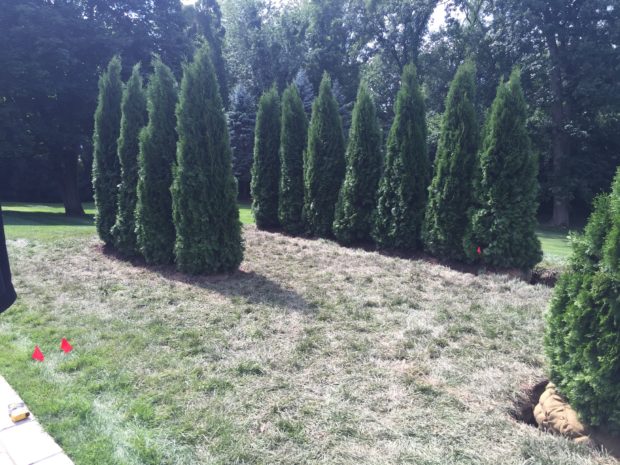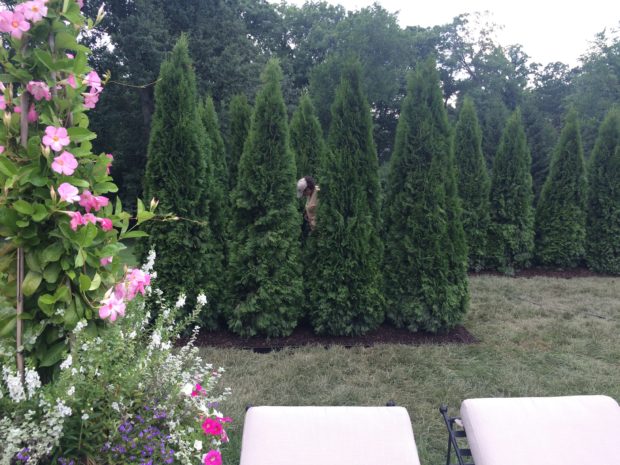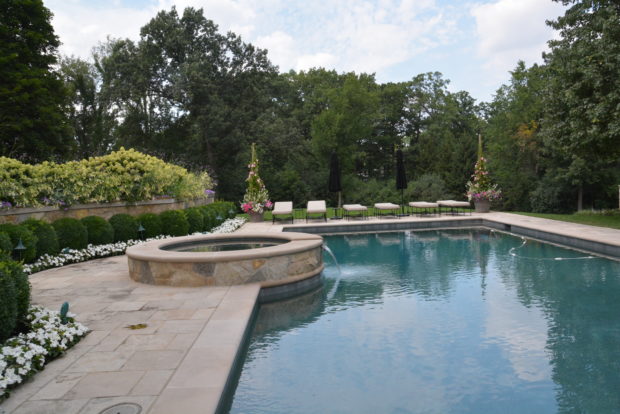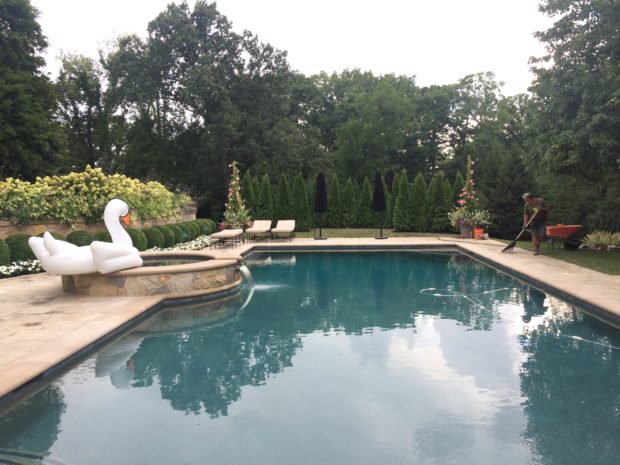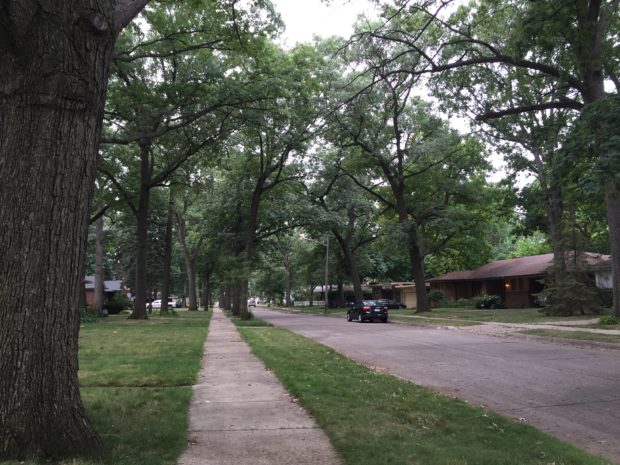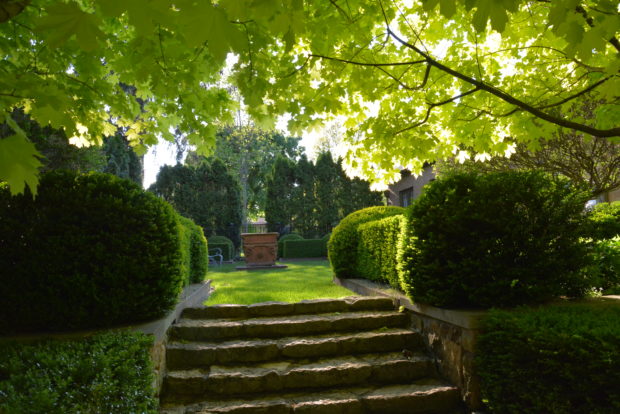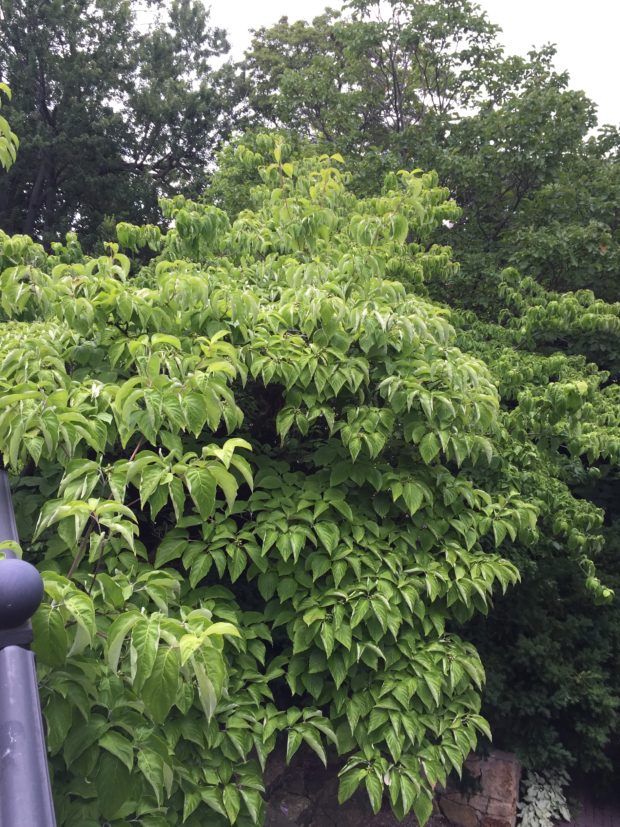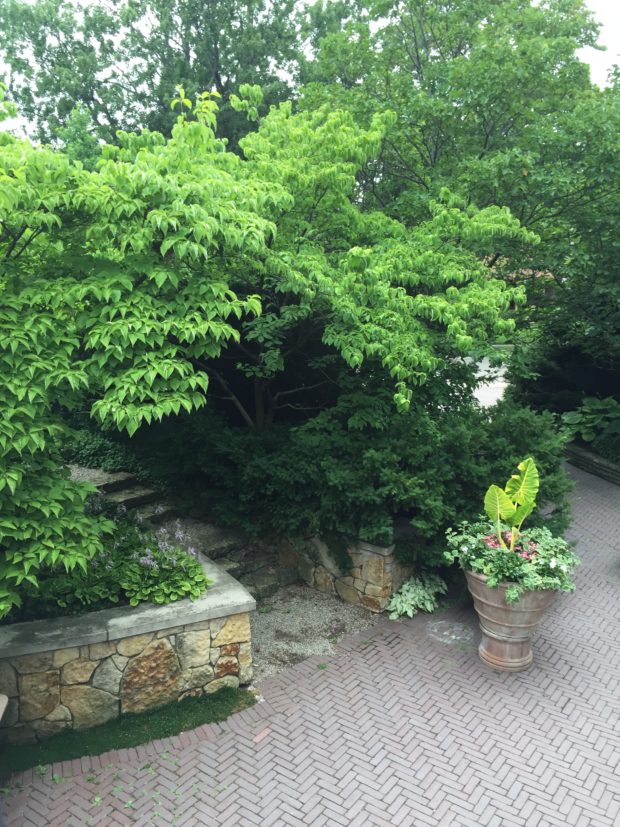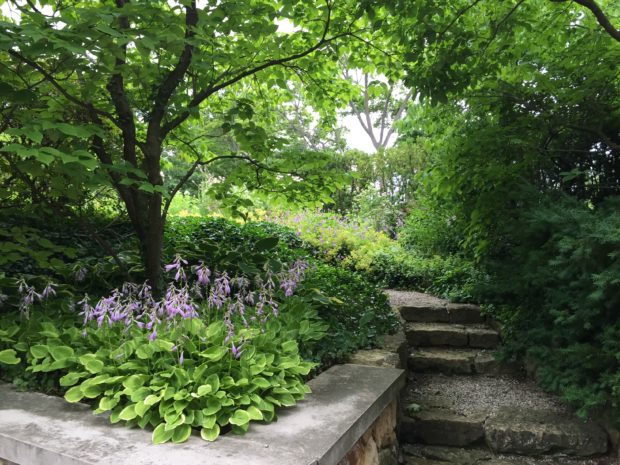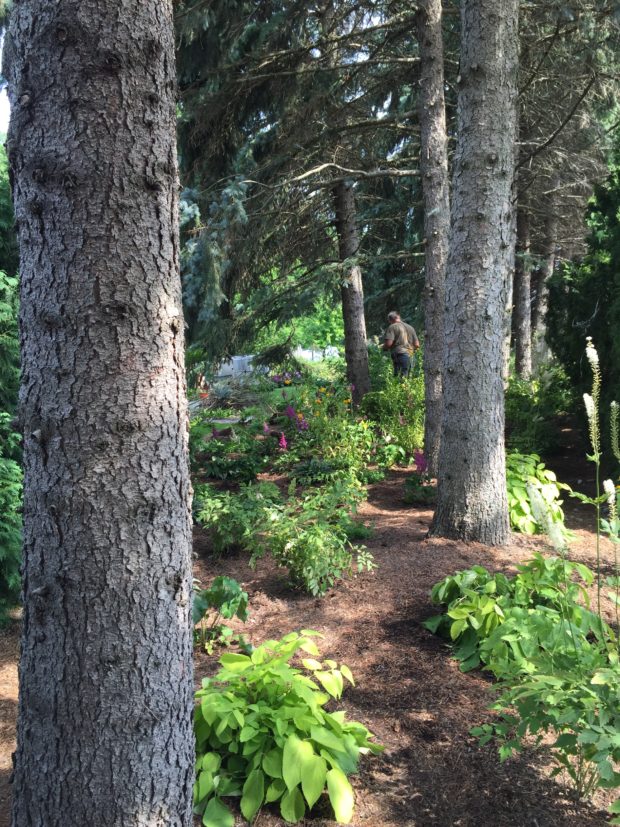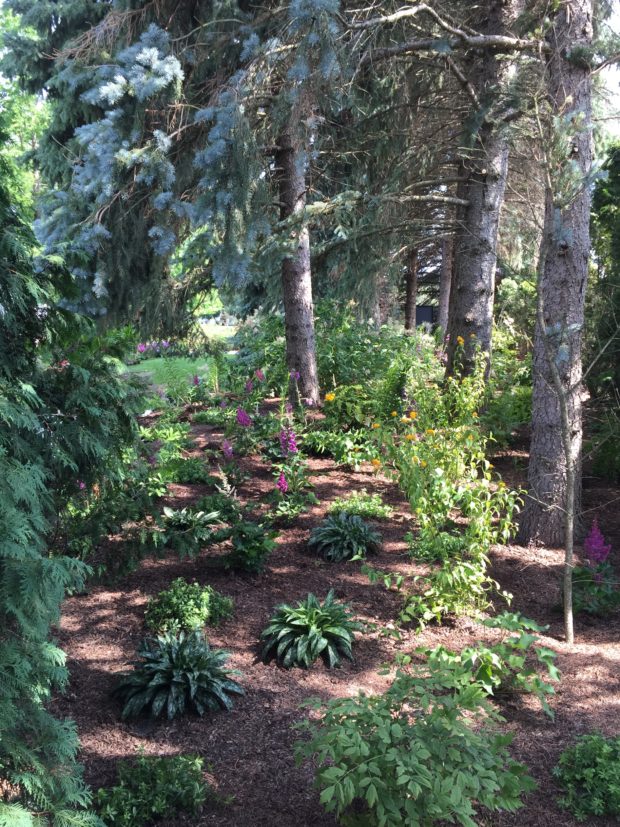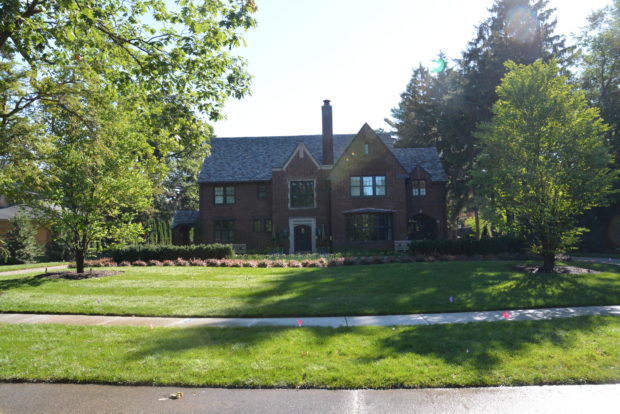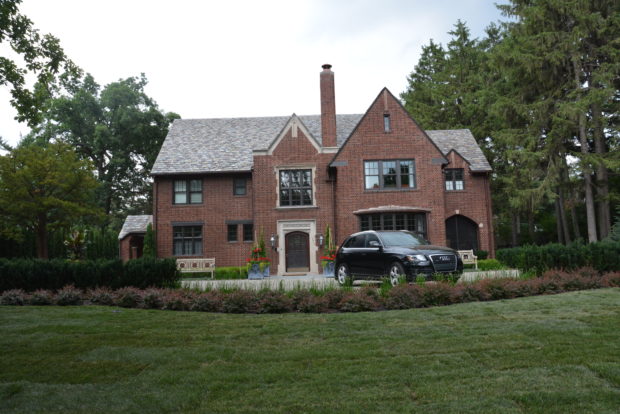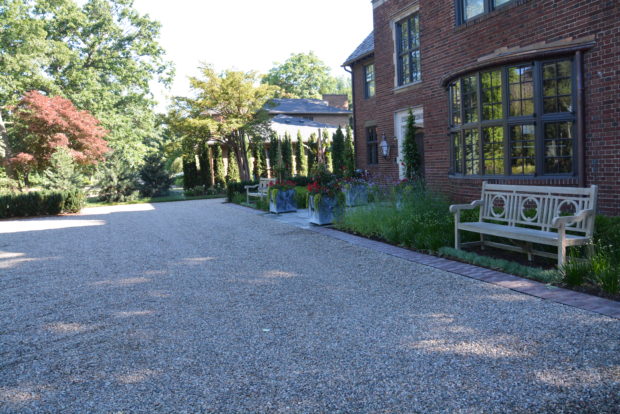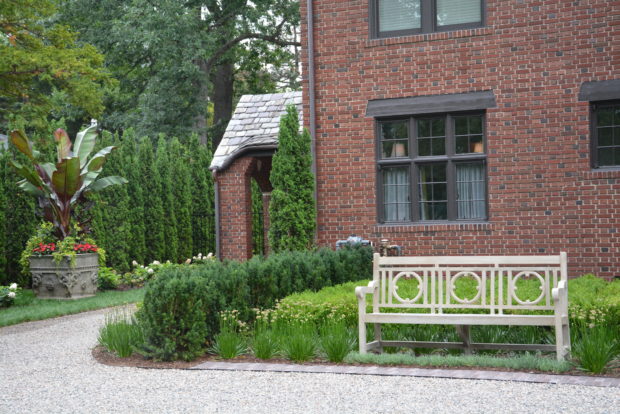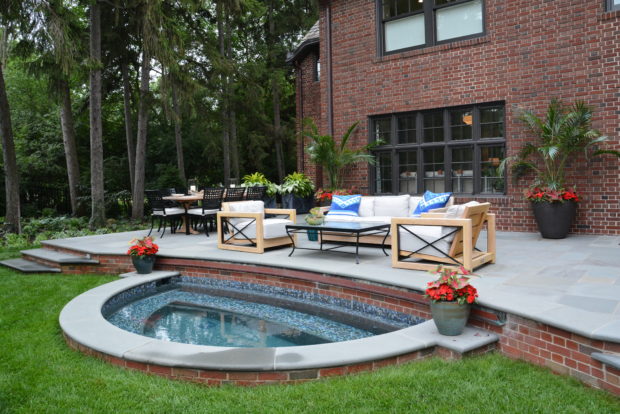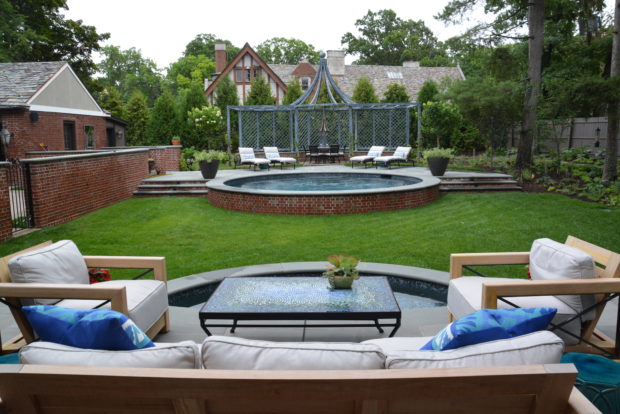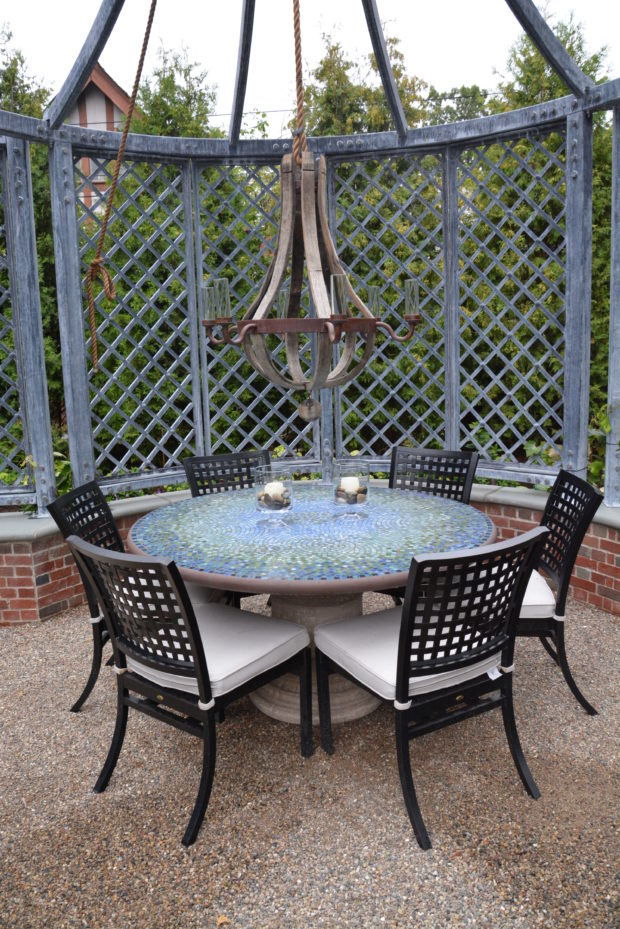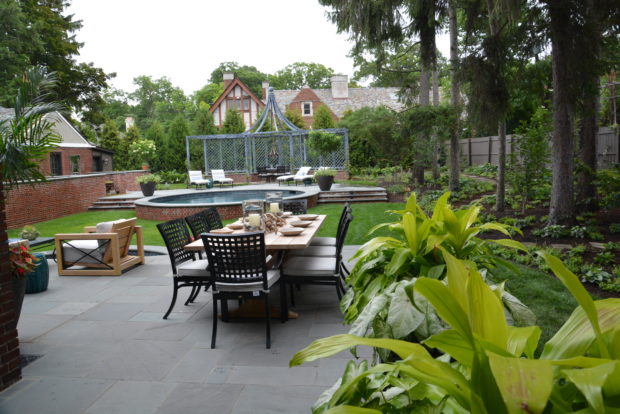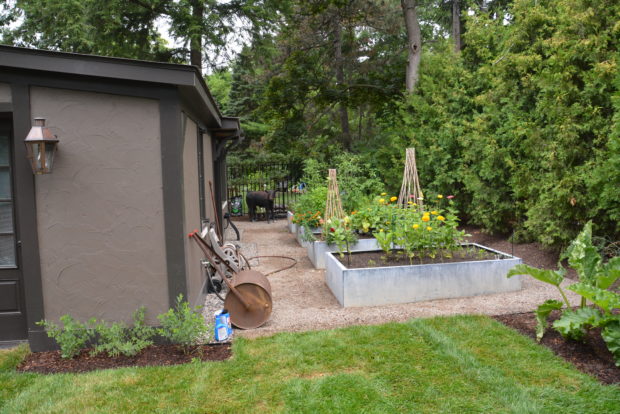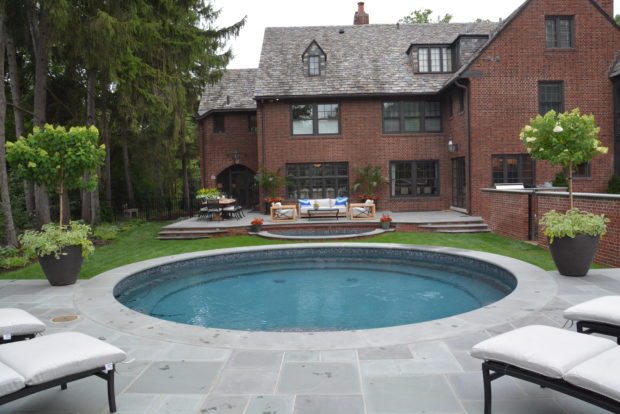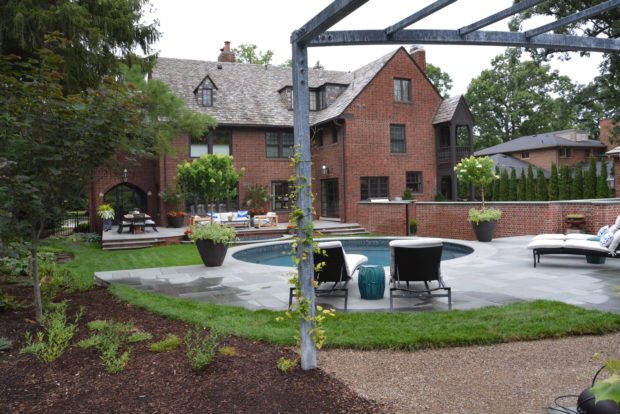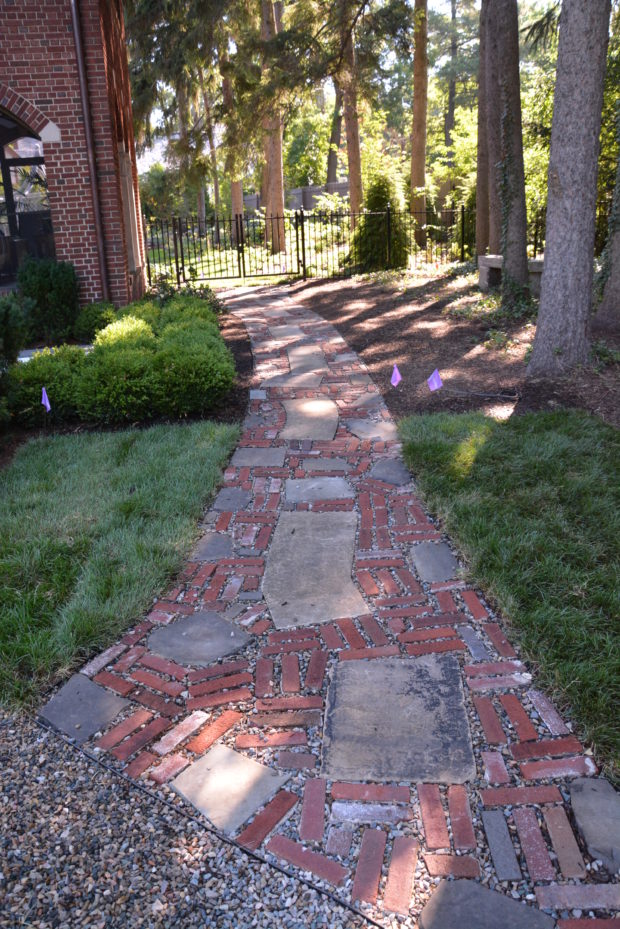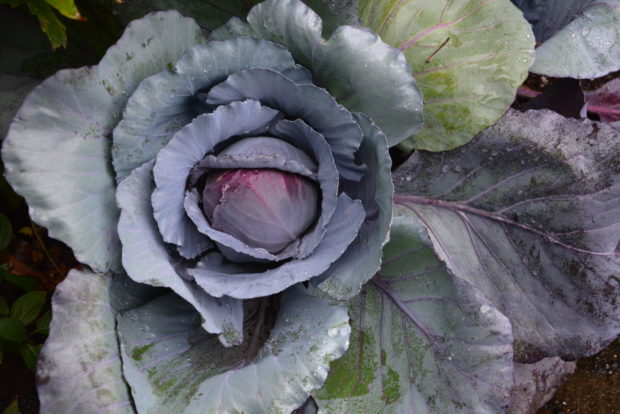 A project in the garden asks for a lot of everything from a gardener. An interesting concept, and a design that clearly communicates that concept comes first. Anyone who has grappled with a design project knows how much work goes on behind the scenes. An idea about how to accomplish that design – an approach to the work – takes that much more time and thought. An installation may take two days, two weeks or two years. But any landscape project surely asks for beautiful materials. Beautiful plants are healthy plants. Doing a proper job of siting a tree, and digging a proper hole for that plant takes time. It only makes sense to be sure the plant that is going in that hole is worthy of all the work it took to plant it. The cabbage pictured above is not only a healthy well grown plant, it is extraordinarily beautiful to look at. The color is complex, and borders on iridescent. To my eye, the shape, texture, mass and color, is riveting. Beautiful plants are incredibly exciting, and make gardening such a pleasure.
A project in the garden asks for a lot of everything from a gardener. An interesting concept, and a design that clearly communicates that concept comes first. Anyone who has grappled with a design project knows how much work goes on behind the scenes. An idea about how to accomplish that design – an approach to the work – takes that much more time and thought. An installation may take two days, two weeks or two years. But any landscape project surely asks for beautiful materials. Beautiful plants are healthy plants. Doing a proper job of siting a tree, and digging a proper hole for that plant takes time. It only makes sense to be sure the plant that is going in that hole is worthy of all the work it took to plant it. The cabbage pictured above is not only a healthy well grown plant, it is extraordinarily beautiful to look at. The color is complex, and borders on iridescent. To my eye, the shape, texture, mass and color, is riveting. Beautiful plants are incredibly exciting, and make gardening such a pleasure.
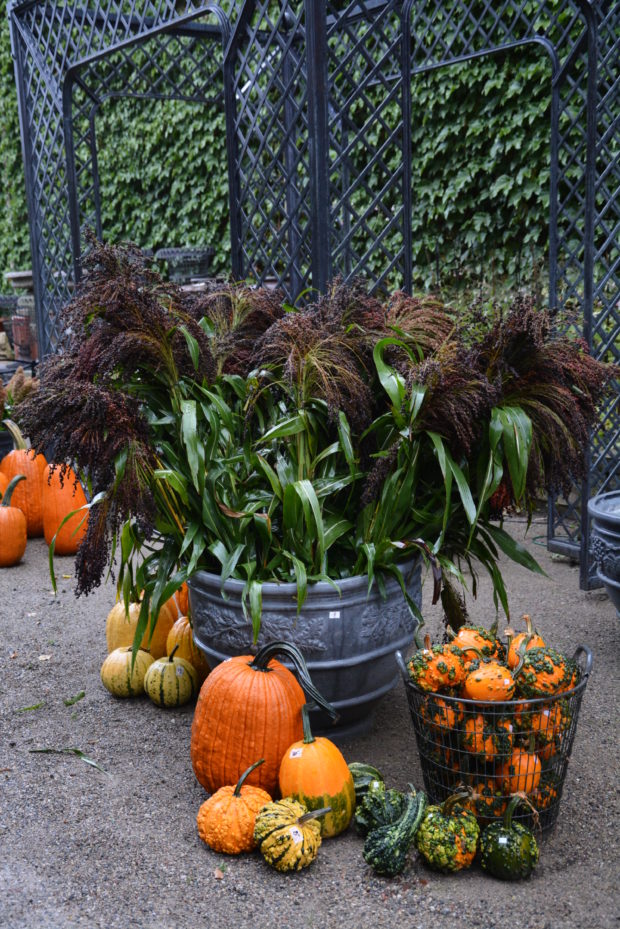 Beautiful fall materials for containers are not only a pleasure to work with, they can inspire, inform, and direct the work. A landscape plan for a client may indicate a certain species of tree, but the final decision always rests with finding that specific tree that not only fulfills the design intent, but is beautiful. There is no hard and fast standard about what constitutes beautiful. Everyone has their own idea. My projects are a a dialogue between a committed client, and my commitment to a great outcome for them. Sometimes the road is bumpy, but we get there. I like it when clients fall for what I install for them. When I plant fall containers, I am very much focused on the beauty of the materials I have available to me. Broom corn is a staple in my fall pots. The stems droop gracefully, they are so loaded with ripe seeds. The corn-like leaves twist as they dry, and add another textural element to an arrangement.
Beautiful fall materials for containers are not only a pleasure to work with, they can inspire, inform, and direct the work. A landscape plan for a client may indicate a certain species of tree, but the final decision always rests with finding that specific tree that not only fulfills the design intent, but is beautiful. There is no hard and fast standard about what constitutes beautiful. Everyone has their own idea. My projects are a a dialogue between a committed client, and my commitment to a great outcome for them. Sometimes the road is bumpy, but we get there. I like it when clients fall for what I install for them. When I plant fall containers, I am very much focused on the beauty of the materials I have available to me. Broom corn is a staple in my fall pots. The stems droop gracefully, they are so loaded with ripe seeds. The corn-like leaves twist as they dry, and add another textural element to an arrangement.
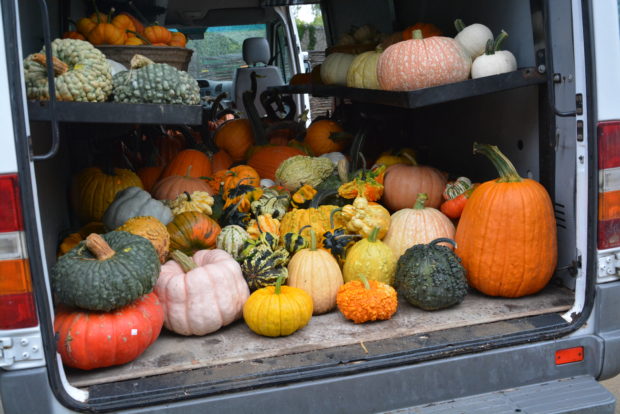 A beautiful collection of materials from which to choose is an easy idea to grasp, but what it takes Detroit Garden Works to get to that collection is a process that is a full time job for my partner, Rob. He travels all over this country, and in Europe, as he has for the past 20 years, to collect beautiful materials of all kinds. He shops locally, meaning he may travel in excess of two hours to a particular hybridizer’s pumpkin field. I can count on his determination to put together a collection that inspires my work, and the work of our clients. We have had calls for weeks about the arrival of his pumpkin collection. The fall container arrangements and plantings we install are all about the beauty of his choices of materials. He is the source for great materials for me.
A beautiful collection of materials from which to choose is an easy idea to grasp, but what it takes Detroit Garden Works to get to that collection is a process that is a full time job for my partner, Rob. He travels all over this country, and in Europe, as he has for the past 20 years, to collect beautiful materials of all kinds. He shops locally, meaning he may travel in excess of two hours to a particular hybridizer’s pumpkin field. I can count on his determination to put together a collection that inspires my work, and the work of our clients. We have had calls for weeks about the arrival of his pumpkin collection. The fall container arrangements and plantings we install are all about the beauty of his choices of materials. He is the source for great materials for me.
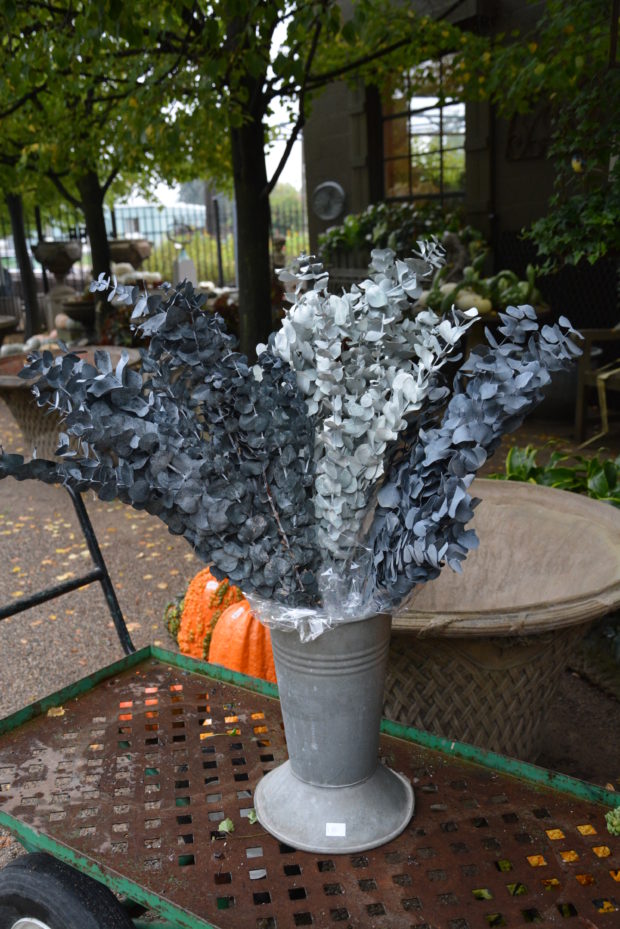 He spent quite some time developing a relationship with a small company that produces dyed and preserved eucalyptus. We carry their entire range of colors. This is a relationship going back 15 years. Preserved eucalyptus is a natural material that can sustain a container planting throughout the fall and the winter. The variety of colors available provides another element to any fall arrangement.
He spent quite some time developing a relationship with a small company that produces dyed and preserved eucalyptus. We carry their entire range of colors. This is a relationship going back 15 years. Preserved eucalyptus is a natural material that can sustain a container planting throughout the fall and the winter. The variety of colors available provides another element to any fall arrangement.
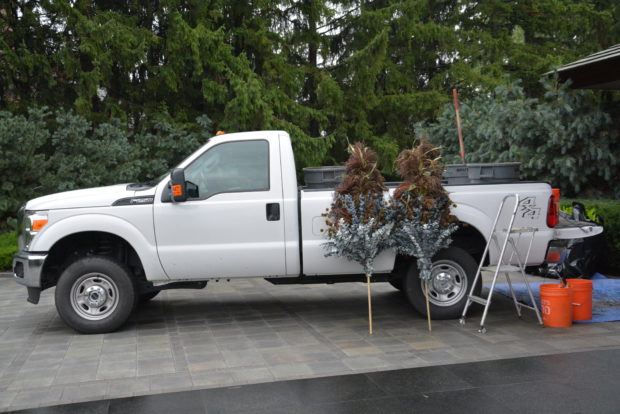 These centerpieces for a pair of fall pots involve a combination of gorgeous materials of all kinds, and my design for this particular client. I owe a lot to those growers who made this possible. And of course to Rob, whose collection of materials make an expression like this possible.
These centerpieces for a pair of fall pots involve a combination of gorgeous materials of all kinds, and my design for this particular client. I owe a lot to those growers who made this possible. And of course to Rob, whose collection of materials make an expression like this possible.
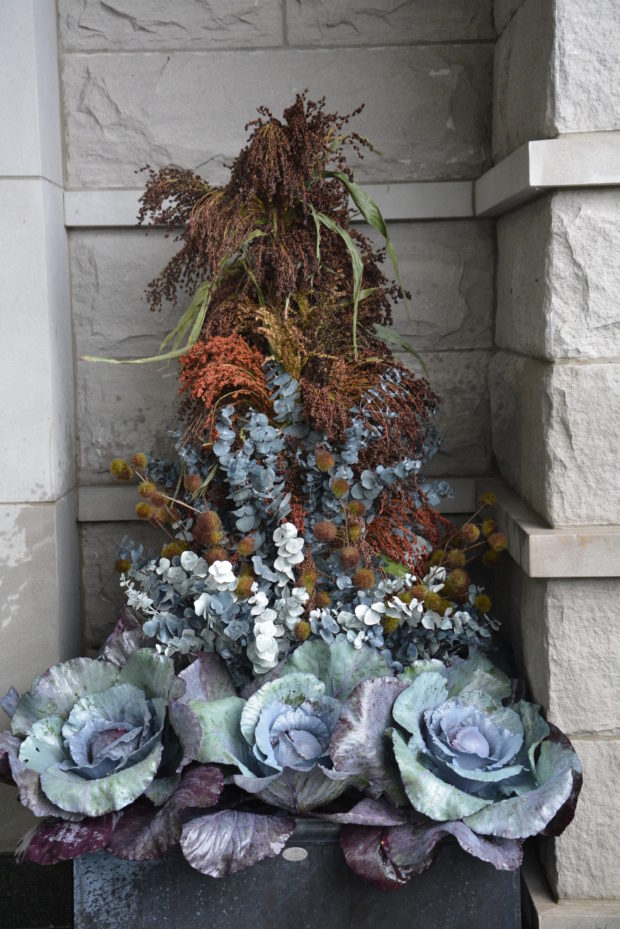 Planting pots for fall takes some of the sting out of the gardening season coming to a close.
Planting pots for fall takes some of the sting out of the gardening season coming to a close.
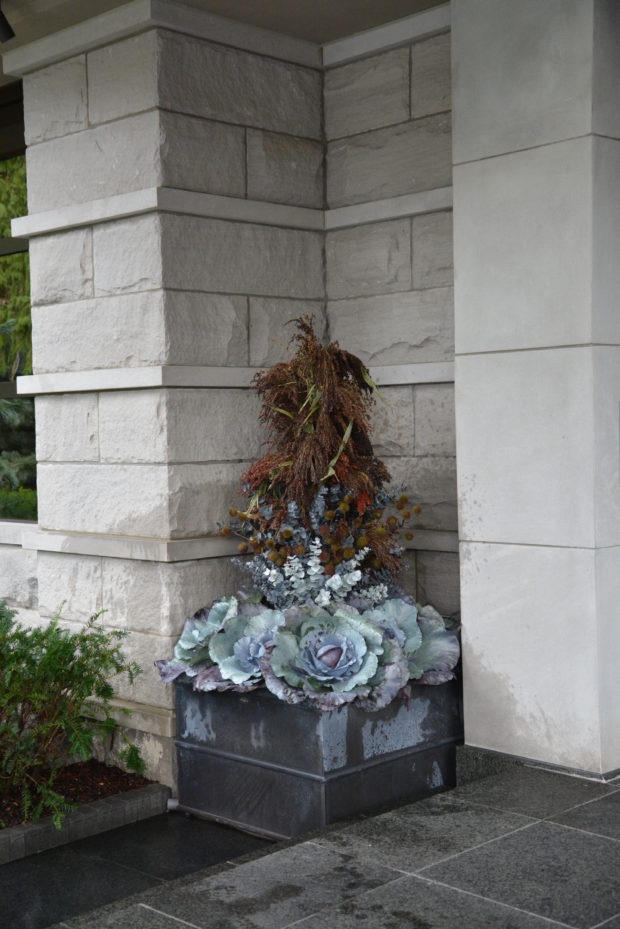 This finished fall container warms up the architecture. It is a personal expression that documents an interest in nature. It will be a pleasure to look at throughout the fall. The next pair of fall containers we plant will look entirely different. That is the beauty of a collection of seasonal plants and materials that is wide and deep. There is no need for any pots to sit empty and silent at the close of the gardening year. Every gardener can shop their own garden as well for dried materials, branches and seed pods.
This finished fall container warms up the architecture. It is a personal expression that documents an interest in nature. It will be a pleasure to look at throughout the fall. The next pair of fall containers we plant will look entirely different. That is the beauty of a collection of seasonal plants and materials that is wide and deep. There is no need for any pots to sit empty and silent at the close of the gardening year. Every gardener can shop their own garden as well for dried materials, branches and seed pods.
 A little late day muted light adds yet another element to the mix.
A little late day muted light adds yet another element to the mix.
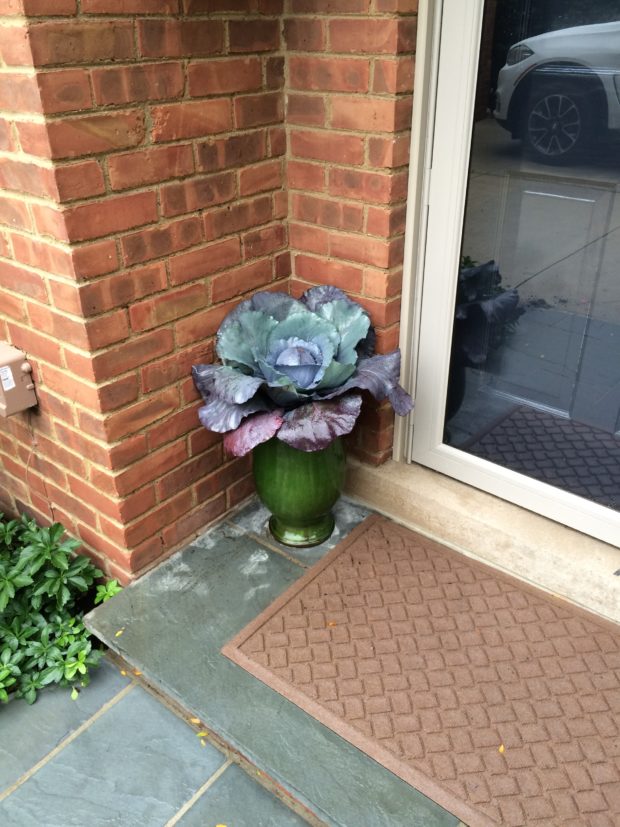 Into every gardener’s container life, a little fall is a good thing.
Into every gardener’s container life, a little fall is a good thing.

